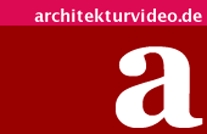Büros Jankowski Architekten und Stadtplaner DWB - Bunkerlofts Cologne - Köln
- Southern facade © Jankowski Architekten Stadtplaner DWB
- © Jankowski Architekten Stadtplaner DWB
- © Jankowski Architekten Stadtplaner DWB
- © Jankowski Architekten Stadtplaner DWB
- Glass on top of steel © Jankowski Architekten Stadtplaner DWB
- © Jankowski Architekten Stadtplaner DWB
- © Jankowski Architekten Stadtplaner DWB
- A ride in a glass lift © Jankowski Architekten Stadtplaner DWB
- On top © Jankowski Architekten Stadtplaner DWB
- © Jankowski Architekten Stadtplaner DWB
- Tone on tone in the staircase © Jankowski Architekten Stadtplaner DWB
In 2008, generous and exclusive apartments, called Bunkerlofts Köln,were built on the rooftop area of a WW II high-rise bunker in the Cologne quarter of Zollstock. They were designed by local architecture firm Jankowski Architekten und Stadtplaner DWB. The costs of the projects accumulated to 2.5 million Euro.
City Houses in Cologne and Surroundings
The firm Jankowski Architekten Stadtplaner DWB in the Cologne quarter of Lindenthal has been around since 1992. Currently, there are 4 architects and urban planners working on various projects such as the Hofhaus am Pixelpark in downtown Cologne. The double-story residential and office building was erected in 2000 and is designed as a courtyard house with a free area surrounded by walls. For another project, Wohnen an der Niehler Rheinpromenade (Living at Niehl Rhine Promenade), the firm has received the 1st prize of the LBS competition “Stadthäuser und Stadtwohnungen – kostengünstig und qualitätsbewusst“ (city houses and apartments – cost-efficient and of high quality) in 2006.Here,Jankowski Architekten have designed eleven city houses in the form of cubes. These buildings have been provided with large window openings. The individual cubes are grouped in a relation 2:1:2 and set back towards the back. Currently, the architects are working on other bunker lofts in Leverkusen and Krefeld, they also participate in competitions.
From the Air-raid Shelter to the Archive
The high-rise bunker in the Cologne quarter of Zollstock from 1942 was commissioned by the builder of the government builder Ernst Nolte. The ferro-concrete building has six stories, two of which are below-ground, four above. More than 2,700 people were able to find shelter from air raids. From 1945 through 1952 the bunker served as a housing unit for the homeless. Later it was partly used as a warehouse, the majority, however, remained empty. Since 1995 the bunker is under monumental protection.
Currently, the bunker is mainly used as an archive. “Thanks to the solid concrete walls and the optimal ventilation system there is a relatively constant climate inside with only little variations“, says architect Karl Jankowski. Apart from that, the bunker building provides plenty of space for storage rooms that can be rented by offices and companies.
Bunker Life
In 2006, Jankowski Architekten Stadtplaner DWB were asked to carry through the reconstruction of the concrete block in Cologne Herthastraße. Originally, the principal wanted to have the four above-ground floors reconstructed. However, this was not possible due to the restrictions laid down in the monumental preservation regulations. Hence, on top of the roof six lofts were built on two levels with an overall floor space of 1,000 square meters. They were erected as a steel and ferro-concrete construction. The apartments have sizes of between 150 through 210 square meters. The rooms can be accessed via the bunker’s staircase, added by a glass lift put in front. On the roof you will find a sundeck providing a view across the skyline of Cologne and the Bergisches Land as a backdrop.
Owed to Monumental Protection
Apart from steel and ferro-concrete the materials used for the bunker lofts are fair-faced concrete, various types of timber, natural stone, glass and aluminum. The bunker’s North façade was not permitted to be altered due to monumental protection regulations. Here, the lofts have window installations that are hardly visible. Towards the inner courtyard the lofts present themselves across a length of 40 meters with a fully glazed and inclined Southern façade. Loggias and terraces provide the nearly transparent pole-disk construction made of Canadian maple wood and special, nano-coated glass with a structure. While the lofts keep moderate on the Northern side, the lightness of the construction is here clearly visible and stands out from the solidness of the bunker structure below.
Büros Jankowski Architekten und Stadtplaner DWB
Completion: 2008
Total floor space: 1,000 m²

























